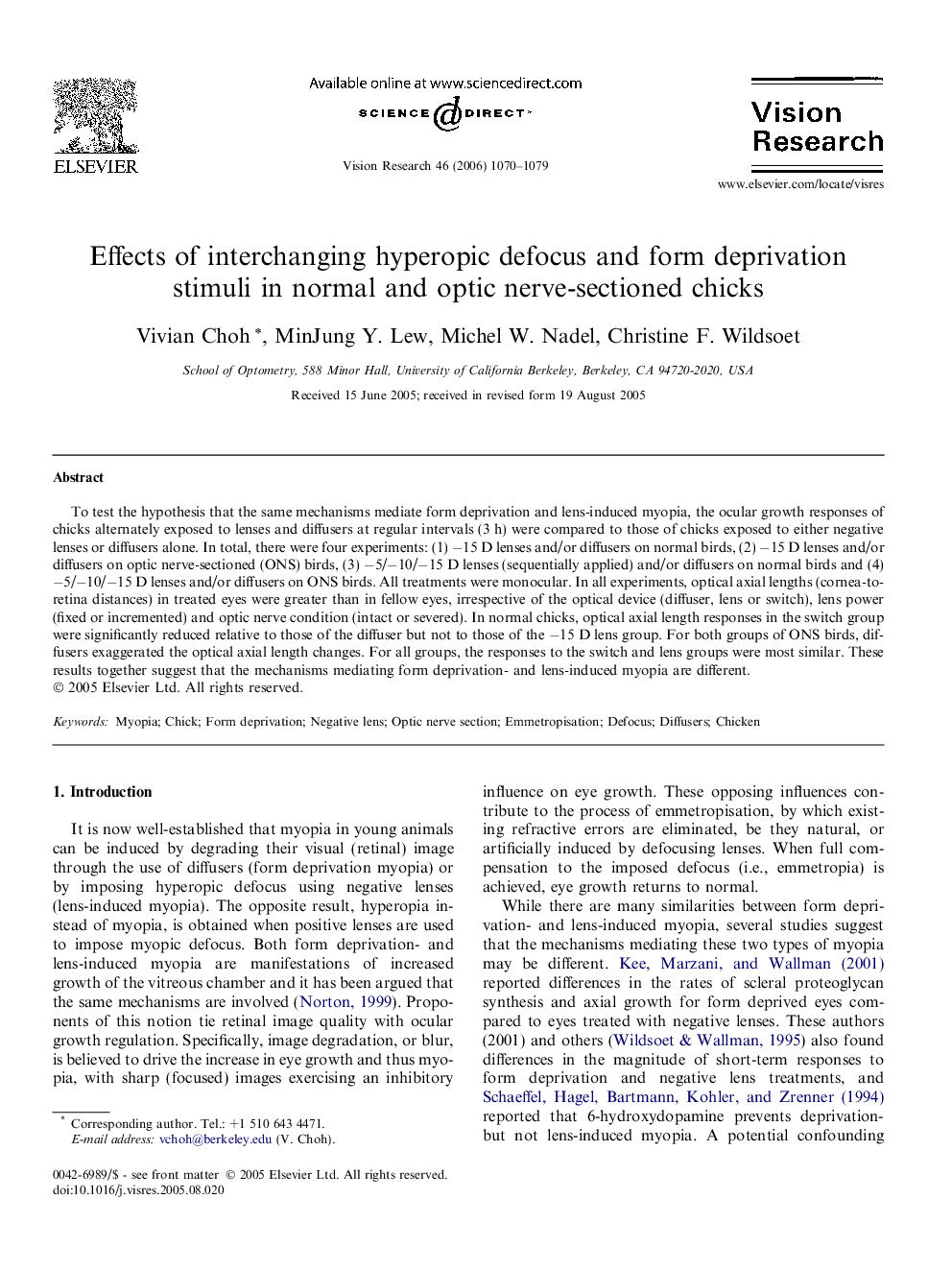| Article ID | Journal | Published Year | Pages | File Type |
|---|---|---|---|---|
| 4036364 | Vision Research | 2006 | 10 Pages |
To test the hypothesis that the same mechanisms mediate form deprivation and lens-induced myopia, the ocular growth responses of chicks alternately exposed to lenses and diffusers at regular intervals (3 h) were compared to those of chicks exposed to either negative lenses or diffusers alone. In total, there were four experiments: (1) −15 D lenses and/or diffusers on normal birds, (2) −15 D lenses and/or diffusers on optic nerve-sectioned (ONS) birds, (3) −5/−10/−15 D lenses (sequentially applied) and/or diffusers on normal birds and (4) −5/−10/−15 D lenses and/or diffusers on ONS birds. All treatments were monocular. In all experiments, optical axial lengths (cornea-to-retina distances) in treated eyes were greater than in fellow eyes, irrespective of the optical device (diffuser, lens or switch), lens power (fixed or incremented) and optic nerve condition (intact or severed). In normal chicks, optical axial length responses in the switch group were significantly reduced relative to those of the diffuser but not to those of the −15 D lens group. For both groups of ONS birds, diffusers exaggerated the optical axial length changes. For all groups, the responses to the switch and lens groups were most similar. These results together suggest that the mechanisms mediating form deprivation- and lens-induced myopia are different.
